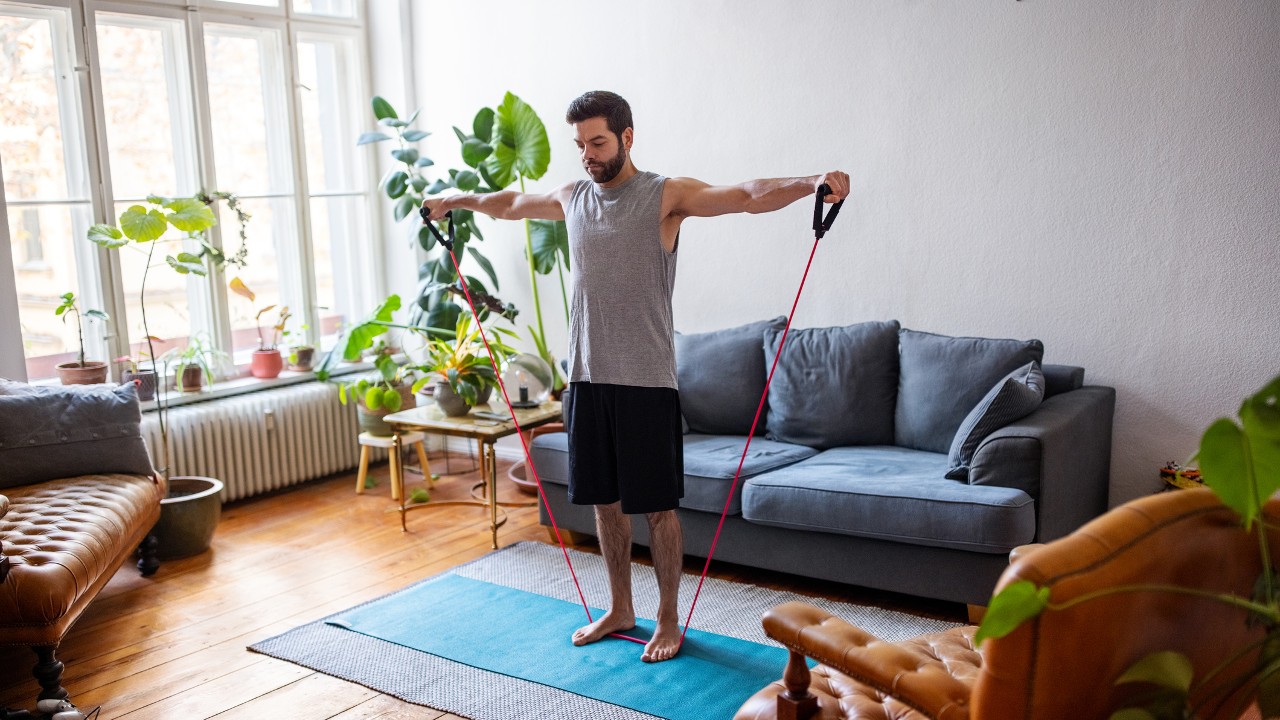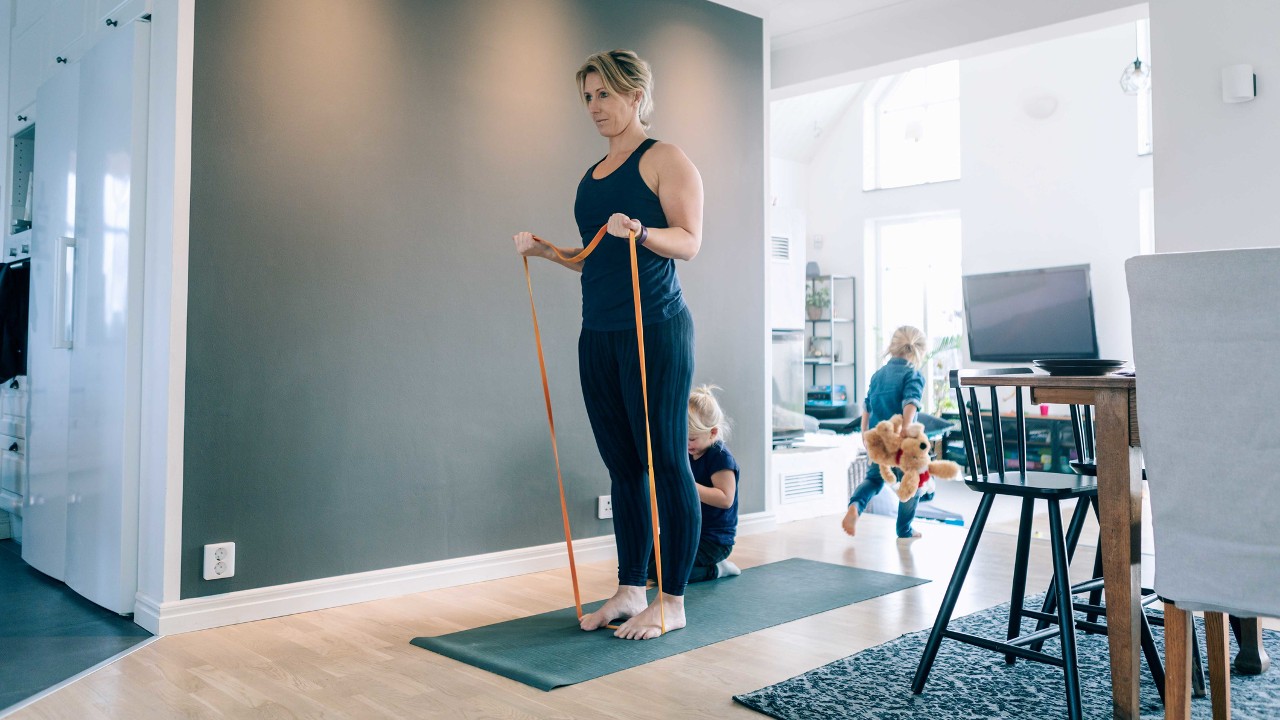The Upper-Body Resistance Band Workout That’s All About Those Gains
Target your arms and shoulders with this brutal band session

If you have ever made the mistaken assumption that a resistance band workout can’t really stress the muscles in the same way weights can, this session should be a real eye-opener. Three rounds of this circuit will leave your arms and shoulders in tatters.
If you’re using this session as a home workout, it’s best to use resistance bands with handles, but a long looped band will also work. If you have neither, you’ll find affordable options for each type in our round-up of the best resistance bands.
This upper-body resistance band workout, designed by Fitness First trainer James Capon, hits your muscles hard by using the 21s methodology. This means with each exercise you do three sets of seven reps. The first seven will just be the bottom half of the movement, the second seven is the top half, and the final seven is the full range.
For example, with biceps curls you would grasp the band and curl up until your arms are parallel with the ground and then return to the starting position for the first seven reps. In the second seven you would start in the parallel position and curl up to the shoulder, and then in the final seven you would do complete curls.
The 21s workout approach is tough, but the stress on the muscles involved should result in greater gains. And we’re all about those gains.
For the circuit below, complete all of the five exercises back to back with no rest. Do three rounds in total with a one-minute break between rounds.
“Before you try this workout, make sure you warm up with a series of upper-body mobilisers like lateral raises and front raises, half Turkish get-ups and arm cross-overs,” says Capon.
Get the Coach Newsletter
Sign up for workout ideas, training advice, reviews of the latest gear and more.
The explanations for each exercise are for the full range of movement, so make sure you adjust them for the bottom half and top half reps – watch the video above for demonstrations of all the variations. For each of these exercises you can increase the resistance in the band by looping it around your feet again.
1 Triceps extension
“Start by standing on the resistance band with both feet and hold one end in each hand,” says Capon. “Position your hands behind your head, with your elbows bent and pointing towards the ceiling. Then straighten your arms overhead. Pause at the top, then lower back to the starting position.”
2 Front raise
“Stand on the resistance band with both feet and pick up both handles with your arms at your sides,” says Capon. “Keeping your back straight and chest up, raise your arms straight in front of you until your hands reach shoulder level, so your arms are parallel to the floor. Pause, then lower back to the starting position.”
3 Lateral raise
“Stand on the resistance band with both feet and pick up both handles so they are resting on the sides of your thighs,” says Capon. “Keep your back straight and your chest up, and ensure there is a slight bend in your elbows. Raise your arms out to the sides until your elbows are at shoulder height. Pause for a few seconds at the top of the movement, then return to the starting position.”
4 Biceps curl

“Stand on the resistance band with both feet and pick up both handles,” says Capon. “Start with your arms straight down the sides of your body and palms facing towards your body. Make sure there is tension in the band – it shouldn’t be loose. Bend your elbows to lift the resistance band handles towards your shoulders. Keep your elbows pointing down to the floor and use an underhand grip so the palm of your hands face in towards your body. Then curl back down.”
5 Seated rear flye
“Begin in a seated position with your legs straight out in front of you,” says Capon. “Loop the resistance band around your feet and pick up both handles, one in each hand. Hold your arms out in front of you with a slight bend in the elbows. Pull the handles back and around so your arms move from out in front of your body directly to the side until your upper arms are pointing straight out to the sides. Pause at the top of the movement, then return to the starting position.”

Nick Harris-Fry is a journalist who has been covering health and fitness since 2015. Nick is an avid runner, covering 70-110km a week, which gives him ample opportunity to test a wide range of running shoes and running gear. He is also the chief tester for fitness trackers and running watches, treadmills and exercise bikes, and workout headphones.
